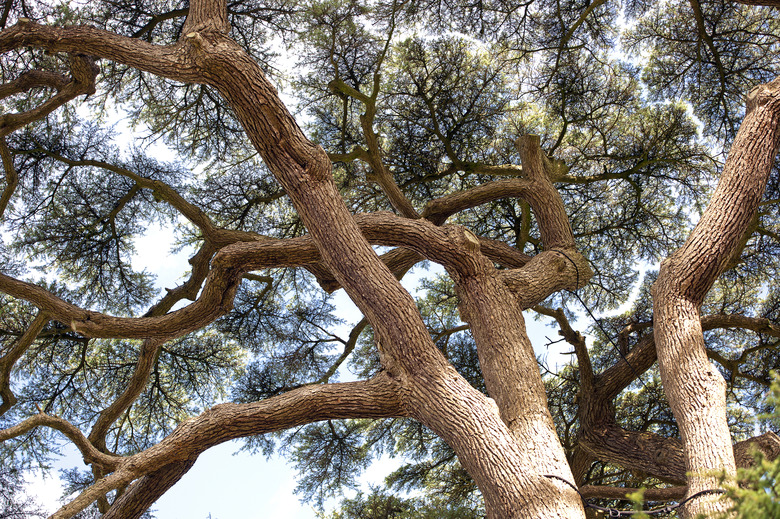How Fast Do Cedar Trees Grow?
When you're planting a tree that can grow for centuries and is, at times, considered a "giant" in the arboreal world, it's a good idea to know how fast and how big that tree might grow. So how fast do cedar trees grow? That depends on the kind of cedar you're talking about and where the tree is since "cedars" grow all over. But speaking in general of cedars as a family, they have a medium to fast growth rate.
Tip
Cedars, in general, can grow over 25 inches a year for their fastest rate of growth, but usually fall in a range of 12 to 24 inches annually.
True vs. False Cedars
True vs. False Cedars
Trees known as "cedars" grow in all kinds of climate zones, all around the world, with varying heights and growth rates. However, there are three families of cedars, including one true cedar family and two faux or false cedars; the "true" cedars (Cedrus spp.) are not native to North America. However, three types can be grown in some regions, like the Pacific Northwest, including the deodar (Cedrus deodara, USDA zones 7-9), the Atlas (Cedrus atlantica, zones 6-9) and the Ceder of Lebanon (Cedrus libani, zones 5-7).
The "true" cedars are native to North Africa, Lebanon, the Eastern Mediterranean and also the Himalayas! True cedars have upright, barrel-shaped cones. Many of the cedars you know in North America tend to actually be "faux cedars," members of the cypress family, the Cupressaceae.
The Most Popular Cedar
The Most Popular Cedar
Among these cypress-not-cedars are some of the most popular ornamental trees in the United States — the Eastern white cedar, such as the Emerald Green arborvitae (Thuja occidentalis 'Smaragd,' zones 2-9), which grows about a foot a year, up to 20 feet tall and 5 feet wide. It's not a great choice for colder climates, though, as it requires so much water that it frequently dehydrates in cold winters. Instead, consider the Brandon arborvitae (Thuja occidentalis 'Brandon,' zones 3-8), growing a max of a foot a year, up to 15 feet high by 8 feet wide.
More moderately sized cedars are popular for hedges, such as the Emerald Green and Brandon, but others are towering behemoths. It's not just the height you need to worry about for the big cedars (and cypresses), but also the roots, which are a dense, fine network. You should plant such cedars at least 20 feet from your home.
West Coast Faux Cedars
West Coast Faux Cedars
One of America's beautiful national parks is the Olympic National Park, on the edge of the Pacific Ocean just outside of Port Angeles, Washington. Towering Western red cedars, also called giant arborvitae (Thuja plicata, zones 5-7), dominate the horizon, and some have lived over 1,000 years. Some of these monster trees reach as high as 230 feet with a diameter up to 23 feet, so it's no wonder they're considered giants of the Pacific. With a rainforest climate and deep, moisture-rich soils, Western red cedars are slow-growing but live long.
'Eastern Red Cedar' Misunderstanding
'Eastern Red Cedar' Misunderstanding
According to the High Plains Journal, there's a war in Texas and elsewhere against the "Eastern red cedar" (aka Eastern redcedar). But Eastern red cedars are a misnomer — because they're actually juniper trees! They're the Juniperus virginiana (zones 2-9), in fact. They're a tough tree, tolerant to drought, heat, salt and cold, and live as long as 500 years. But like most of the rest of the cedars you know of in North America, they're not true cedars.
Do Your Homework
Do Your Homework
Find out which false cedars are the best for your growing zones and specifically your neck of the woods. If people talk about microclimates in your area, that's a sign that things can get tricky when picking great trees for your land.
One of the most respected authors on the subject of trees in America is Michael Dirr, whose Manual of Woody Landscape Plants is a landscaper's bible. For something slightly less academic, Dirr's Encyclopedia of Trees & Shrubs is a masterwork must-have for any passionate gardener's library. But don't forget, a quality nursery staff will always be deeply rooted in your local growing climate, so be sure to talk to the pros.
